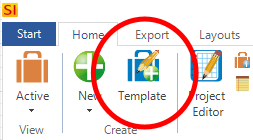Tip of the Month: Decrease Quoting Time – Project Template Usage and Project Cloning via SI 2018
Back by Popular demand! An encore presentation of a prior TOM!
After speaking with many of you at this year’s CEDIA Expo, I realized that some of you were very curious about this subject but had missed this prior Tip of the Month regarding decreasing your quote creation time. So, as requested, here is an updated version for System Integrator – SI 2018.
Enjoy and thanks for your feedback at the show!
_____________________________________________________________________________________
Decreasing Quoting Time – Project Template Usage and Project Cloning via SI 2018
Save time and ensure design outcome.
“I feel the need…The need for speed!” To borrow a quote from an over-hyped, ubiquitous 80’s blockbuster movie. So says “Maverick”, so say most of us in this industry. The need for improved quickness in the ability to generate quotes for our clients is essential in today’s breakneck-paced, social network “technocracy” that is our modern world.
But is faster always better? If you want to ensure a positive response to that question then your usage of SI 2018 should include the benefits that both “Project Templates” and “Project Cloning” can offer. Both include unique options that will solidify your team’s quote results, reinforce tested design scenarios, and ultimately lead to greater productivity with your sales team.
When to clone or when to use a template? Both of these answers will depend upon your preferred outcome and certain project details. Templates can be set for a various system or solution parameters while cloning replicates a prior project’s details. Having used both in the field myself, either is a great way to cut down project/quote creation time.
So let’s look at example scenarios for both options within SI 2018 so that you can speed up quote delivery time and improve your outcome for greater consistency:
Project Templates
First, let’s explore the overall concept and then get you set-up with the interface. In case you’re new to SI, “Project Templates” are a way to create fully built-out design solutions for any such sectors (or combination of sectors) your company quotes (e.g. A/V, security, surveillance, access control, etc.).
For instance, let’s say you’ve recently completed a large security and surveillance quote for one of your clients. This project can now be saved as a template for all such security and surveillance quotes going forward for your team.
Or if you submit multiple quotes for certain system solutions to a specific client on a regular basis, you can simply create the initial project one time and then save that version as a template for all quotes of the same nature going forward.
So how do I do this you ask? Allow me to walk you through the process.
First…you’ll need to navigate to the Project Explorer –

From there, simply execute a single left-click of your mouse to highlight (light blue shading) the intended project that will be the basis of your new template –

Next, select the option “Template” in the upper left corner of the Home tab of the project explorer –
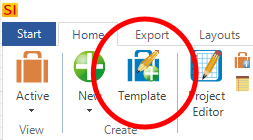
You’ll then see this pop-up box that will ask you to name the new template –
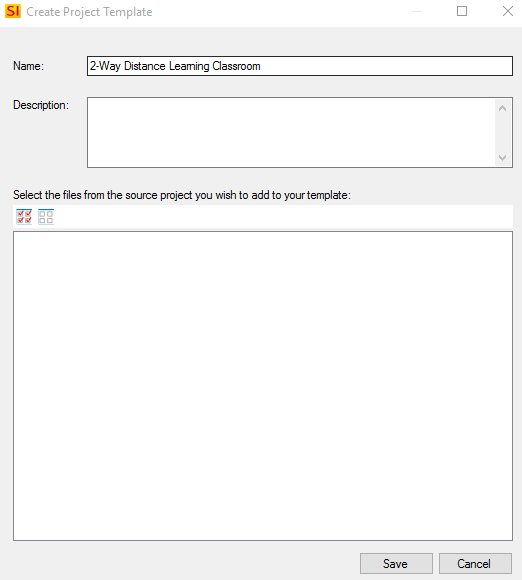
You can also provide a description (if helpful) and select files including system design drawings from the source project to attach to the new template. Once done, just click “Save”.
Next, create a new project with the “New” button just to the left of the prior “Template” option and select “From Template” to execute –
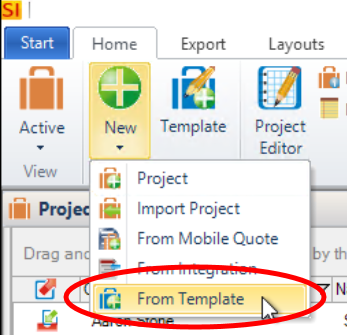
You now will have the option to select your newly (or previously) created project Template –
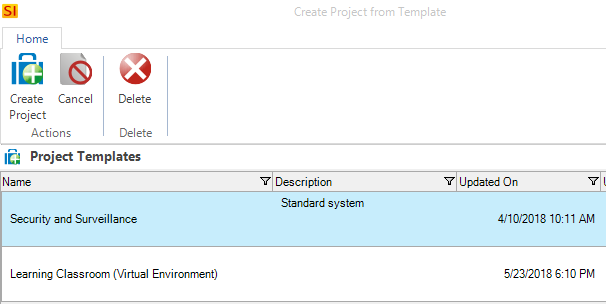
Upon doing so, your new project will launch asking you to select a client, name the project, and either hit “Save” to immediately jump into the project or hit “Next” to run the “Project Wizard” to update project details and other project/client specifics.
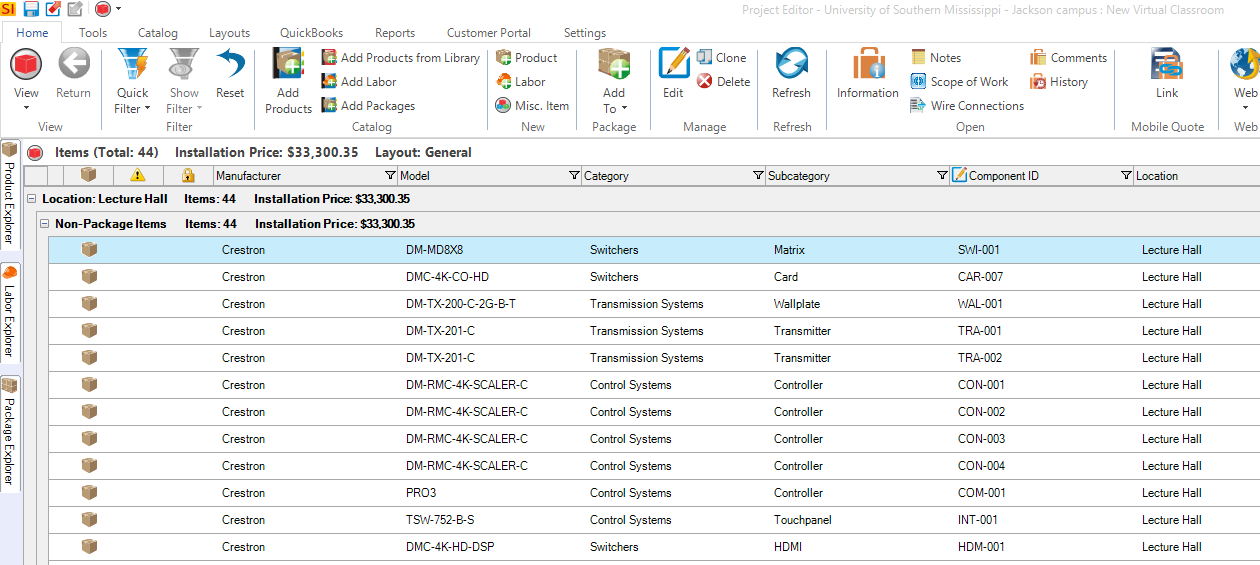
And just like that, you’ve created a fully, built-out project that could be mere minutes away from submission to your client.
Project Cloning
In a differing approach, “Project Cloning” enables you to quickly create a new project with all the details of the prior project including design drawings and other files attached to the project such as a scope of work document. The only items that could potentially require updating would be the customer contact information and perhaps modification of location/room names.
So let’s review this process. Again, we’ll start in the Project Explorer –

Next, we’ll need to just simply highlight the project targeted for cloning…
![]()
and check it out from the server.
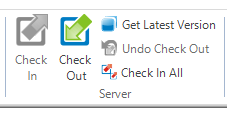
From here, we simply need to select “Clone” in the “Manage” section of the Home tab –
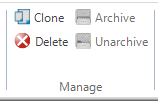
Now, we have options to select from that can be seen below here –
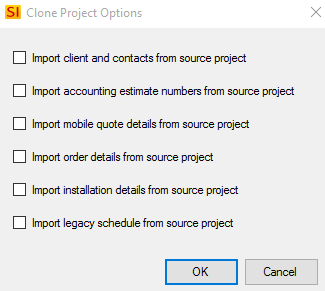
We can import client and contact information along with accounting estimate numbers, mobile quote data, order details, installation details, and scheduling details. Any and all of these items can greatly decrease project creation time.
Once these choices are made and “OK” is selected, the ever-familiar “Project Wizard” greets us…
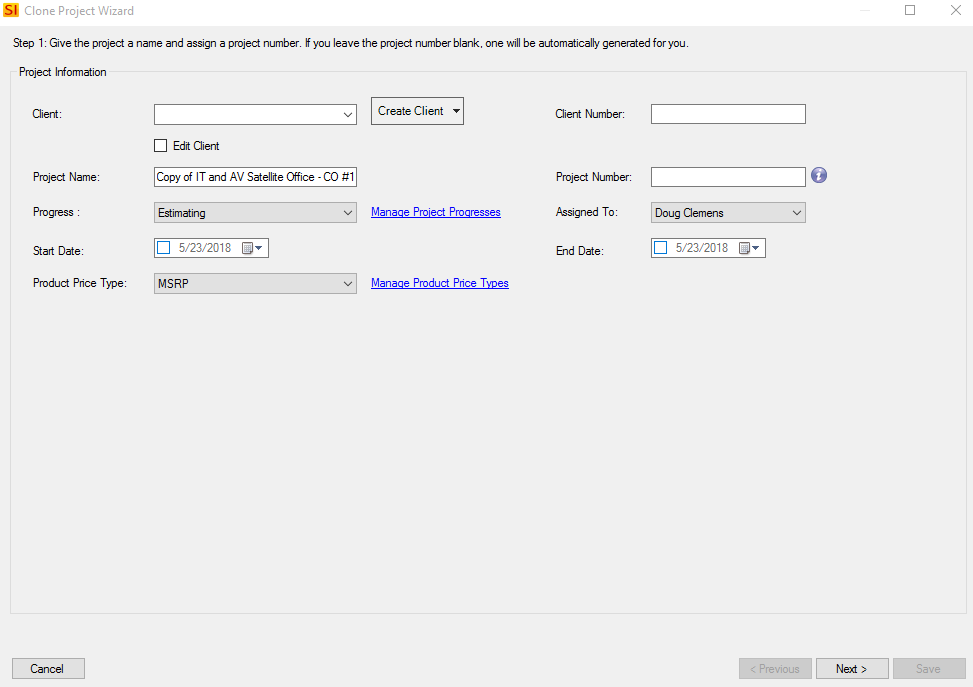
From here we need to just select the appropriate client and re-name (if necessary) the project and then hit “Save” to immediately jump into the project or hit “Next” to run the “Project Wizard” to update project details and specifics.
Then we can choose any other project attached files from the cloned project (including system design drawings) to come along for the ride to the new project…
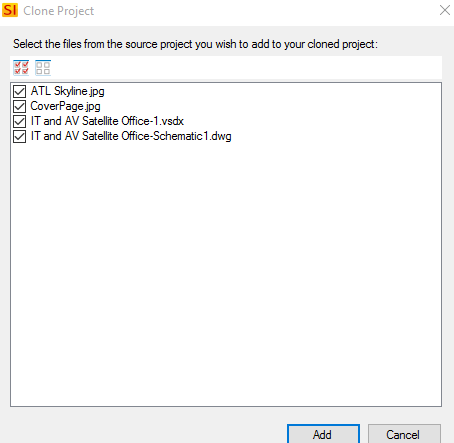
Upon clicking “Add”, a whole new, built-out project design opens and is ready for any necessary modification of phases, taxes, payment terms, location/names, etc. before generating a proposal for our client.
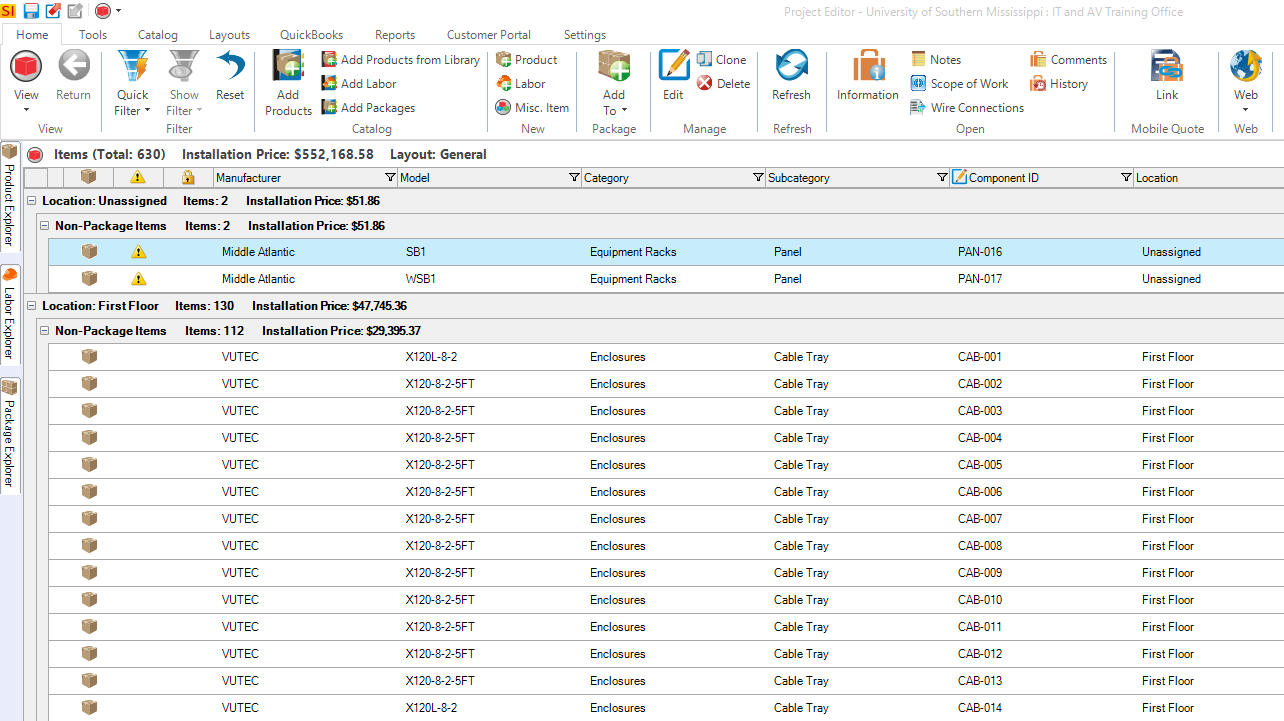
Either of these project generation options can contribute to saving time, decreasing errors, increasing productivity, and solidifying your team’s efforts at system design replication.
And this is one of D-Tools’ undeniable strong suits, the quick creation of large-scale projects with accompanying system design drawings with thoroughly built-out design parameters.
Hopefully, you can employ one or both of these options to assist your team in achieving great results and utilize D-Tools’ SI solution to its fullest envisioned potential – a Designer and System Integrator’s software tool.


